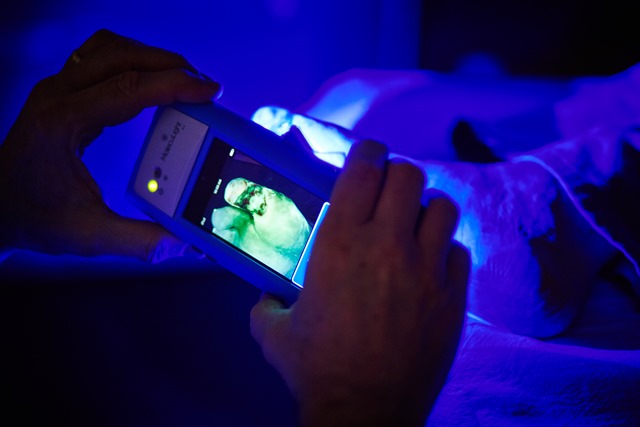The MolecuLight i:X
A Canadian invention revolutionizing wound care
When Dr Ralph DaCosta, a cancer scientist at the Princess Margaret Cancer Center in Toronto, first discovered that his optical fluorescence camera could detect bacteria, almost 11 years ago, he may not have anticipated the impact his invention would be having in wound care today. He founded the company, MolecuLight Inc. in June 2012 and after a few years of product development and clinical trials, the product received Health Canada Approval in October 2015.
Today, the patented technology Dr DaCosta developed, MolecuLight i:X, allows clinicians to visualize the presence and distribution of potentially harmful bacteria in and around wounds without patient contact or need for contrast agents, in addition to providing quick and easy wound area measurement. The device’s handheld size and intuitive user interface are designed for use by clinicians of all skill levels as well as across hospitals and wound care clinical settings. Real-time fluorescence information on bacterial presence and distribution obtained via bacterial fluorescence imaging, in combination with best clinical practices, can guide early interventions (i.e. wound debridement) to reduce bioburden, promote wound healing, and decrease wound care costs associated with delayed wound healing and ineffective treatments.
The MolecuLight i:X is a state-of-the-art fluorescence imaging device that provides instant visual detection and documentation of bacteria in wounds that would otherwise be invisible. When excited by a specific wavelength of light, tissues (i.e. collagen) emit a characteristic green fluorescence and bacteria emit either a red fluorescence colour (caused by endogenous porphyrin molecules) or a cyan-fluorescence colour (caused by endogenous pyoverdine molecules), the latter attributed specifically to Pseudomonas spp.
The MolecuLight i:X Wound Intelligence Device also allows for standard wound images to be captured and wound areas to be quickly and accurately measured for documentation.
Pathogens detected by the MolecuLight i:X include, the following clinically relevant bacterial species: Staphylococcus aureus (including methicillin-resistant Staphylococcus aureus), Pseudomonas aeruginosa, Escherichia coli, Staphylococcus lugdunensis, Enterococcus spp, Proteus spp, Klebsiella pneumonia, Beta-hemolytic Streptococci (Group B), and Enterobacter spp.
Clinicians around the world are using the MolecuLight i:X for fluorescence image-guided sampling and debridement, informing antimicrobial stewardship practices and treatment selection monitoring and documentation of treatment effectiveness and facilitation of patient education and engagement in their care.
Though the link between bioburden and delayed wound healing is universally accepted innovations have overwhelmingly focused on methods to decrease bioburden (e.g. antimicrobials) while (technology) innovations in actual diagnosis of bioburden have lagged behind. With the emergence of handheld bacterial fluorescence imaging at the bed side, wound care clinicians can finally benefit from medical imaging advances that have been sorely lacking in this field. The MolecuLight i:X represents a new frontier in wound care in which bioburden can be visualized in real-time and evidence-based treatment selections made to specifically target bioburden on an individualized patient level. Treatment effectiveness can now be evaluated in real-time, and wound care costs associated with inappropriate selection of therapies decreased.
The MolecuLight i:X is currently approved by Health Canada and has CE marking. It is pending FDA De Novo approval. The MolecuLight i:X product and related accessories are distributed by Smith & Nephew.
This article was provided by MolecuLight.


